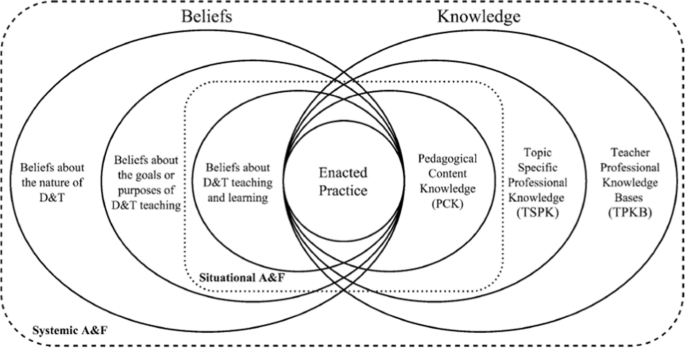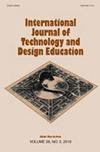Factors influencing Swedish grades 4–6 technology teachers’ choice of teaching and learning material in programming education
IF 2.7
3区 工程技术
Q2 EDUCATION & EDUCATIONAL RESEARCH
International Journal of Technology and Design Education
Pub Date : 2023-10-24
DOI:10.1007/s10798-023-09860-8
引用次数: 0
Abstract
Abstract There is a recognized need to understand the current state of programming implementation in the Swedish compulsory school system. This study focused specifically on the implementation of programming in the school subject of technology for grades 4–6. In Sweden, the responsibility for choosing teaching and learning material lies with individual teachers. Recent studies have indicated the prevalence of visual programming languages (VPLs) in classrooms. However, no empirical research has specifically investigated why teachers select particular programming learning environments (PLEs) and the challenges they have overcome in this process. Therefore, this study aimed to explore the PLEs used by teachers and the factors influencing their choices. In addition, this study explored the role of pedagogical content knowledge (PCK) and the influence of systemic and situational amplifiers and filters in shaping the programming education landscape, highlighting the importance of understanding these factors for effective implementation. Semi-structured interviews were conducted with 14 experienced programming teachers in grades 4–6 to gather insights. The results revealed that VPLs, particularly Scratch, have been widely adopted, but the study also identified three textual programming languages being utilized. Furthermore, the findings indicate that teachers’ previous education plays a significant role in shaping their PLE preferences. This suggests that programming education in both professional development and preservice teacher training is crucial for effective implementation. By investigating PLE choices and the factors influencing them, this study contributes to a better understanding of the current landscape of programming education in Sweden’s compulsory school system.

瑞典4-6年级技术教师程序设计教学材料选择的影响因素
有一个公认的需要了解规划实施在瑞典义务教育系统的现状。本研究特别关注4-6年级学校技术学科中程序设计的实施。在瑞典,选择教学材料的责任在于教师个人。最近的研究表明,可视化编程语言(vpl)在课堂上的流行。然而,没有实证研究专门调查了教师为什么选择特定的编程学习环境(ple)以及他们在这一过程中所克服的挑战。因此,本研究旨在探讨教师使用英语的方式及影响其选择的因素。此外,本研究探讨了教学内容知识(PCK)的作用,以及系统和情境放大器和过滤器在塑造编程教育景观中的影响,强调了理解这些因素对于有效实施的重要性。对14名4-6年级的资深编程教师进行了半结构化访谈,以收集见解。结果显示vpl,特别是Scratch,已经被广泛采用,但研究也确定了三种正在使用的文本编程语言。此外,研究结果还表明,教师的教育背景对他们的教育偏好起着重要的作用。这表明,专业发展和职前教师培训方面的编程教育对有效实施至关重要。通过调查学生编程选择及其影响因素,本研究有助于更好地了解瑞典义务教育系统中编程教育的现状。
本文章由计算机程序翻译,如有差异,请以英文原文为准。
求助全文
约1分钟内获得全文
求助全文
来源期刊
CiteScore
5.30
自引率
19.00%
发文量
61
审稿时长
>12 weeks
期刊介绍:
The International Journal of Technology and Design Education seeks to encourage research and scholarly writing about any aspect of technology and design education. Critical, review, and comparative studies are particularly prominent, as are contributions which draw upon other literatures, such as those derived from historical, philosophical, sociological or psychological studies of technology or design, in order to address issues of concern to technology and design education.
One of the most significant developments of recent years has been the emergence of technology and design education as an integral part of general education in many parts of the world. Its distinctive curriculum features are technological literacy and capability and it highlights the importance of `knowledge in action'', of `doing'' as well as `understanding''.

 求助内容:
求助内容: 应助结果提醒方式:
应助结果提醒方式:


